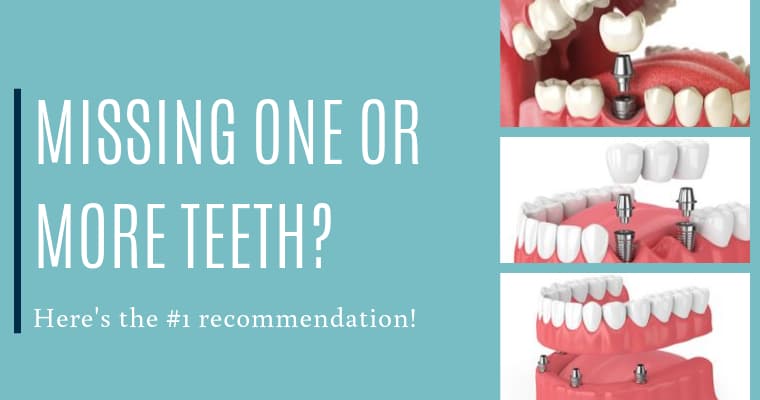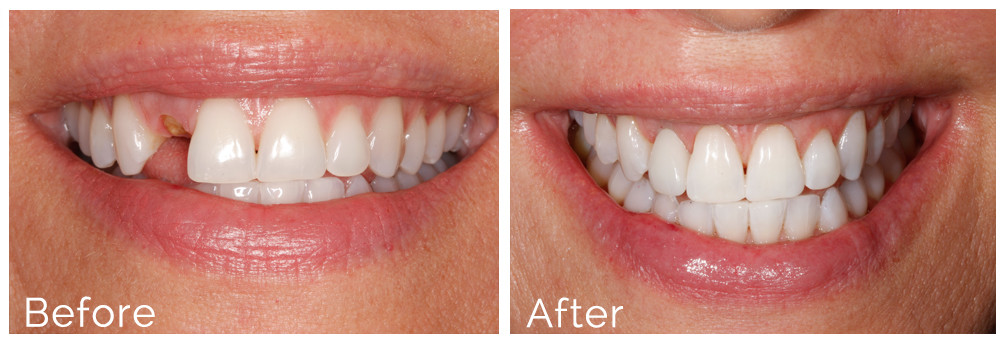The Best Guide To Dental Sense
The Best Guide To Dental Sense
Blog Article
Facts About Dental Sense Revealed
Table of ContentsThe Of Dental SenseThe 15-Second Trick For Dental SenseThe smart Trick of Dental Sense That Nobody is Talking About6 Simple Techniques For Dental Sense
are clinical gadgets operatively dental implanted into the jaw to restore a person's capacity to chew or their look. They provide support for fabricated (phony) teeth, such as crowns, bridges, or dentures. When a tooth is lost due to injury or condition, an individual can experience issues such as rapid bone loss, defective speech, or adjustments to eating patterns that result in pain.Dental implant systems include an oral implant body and oral implant joint and might likewise consist of an abutment fixation screw. Dental implants. The dental implant body is operatively inserted in the jawbone in area of the tooth's root. The dental implant joint is typically affixed to the implant body by the abutment fixation screw and prolongs with gum tissues right into the mouth to support the connected fabricated teeth
(https://dentalsense1.wordpress.com/2025/01/11/dental-implants-root-canal-procedures-professional-teeth-whitening/)Framework of The Oral Implant System picking dental implants, talk with your dental service provider about the possible benefits and risks, and whether you are a prospect for the procedure. Things to take into consideration: Your overall health is a crucial consider determining whether you are an excellent prospect for oral implants, how much time it will take to heal, and how much time the implant might remain in location.
Smoking might affect the healing procedure and decrease the long-term success of the implant. The healing process for the dental implant body may take a number of months or longer, throughout which time you normally have a short-term abutment instead of the tooth. the dental implant treatment: Carefully follow the oral health guidelines offered to you by your oral provider.
Dental Sense Fundamentals Explained
Implant failure can result in the need for an additional surgical procedure to fix or change the implant system. Restores the ability to chew Recovers aesthetic appearance Aids maintain the jawbone from shrinking because of bone loss Preserves the health of the surrounding bone and gum tissues Helps maintain adjacent (close-by) teeth stable Boosts high quality of life Damage to surrounding natural teeth throughout dental implant positioning Injury to the surrounding cells throughout surgical treatment, such as sinus perforation Injury during surgery (for instance, crack of surrounding jawbone) Poor function, such as seeming like the teeth do not bite with each other typically A sensation that the tooth hangs or twisting in location resulting from an abutment screw loosening Implant body failure (looseness of the implant body) as a result of systemic infection, which may be a lot more likely in patients with unchecked diabetes mellitus as a result of regional infection in bone and periodontals supporting the implant body as a result of postponed healing, which may be most likely in people that smoke Difficulty cleaning my sources the gum tissues around the dental implant, leading to poor oral health Unattended periodontal illness Post-surgical numbness due to nerve impingement or damage Always inform healthcare carriers and imaging professionals that you have dental implants prior to any kind of magnetic resonance imaging (MRI) or x-ray treatments.
FDA is not knowledgeable about any adverse occasions reported for MRI or x-ray procedures with dental implants. Dental implants systems are typically made from materials that adhere to international agreement standards of the International Company for Standardization (ISO) or ASTM International. These requirements have details of what makes a safe product.

An oral implant is a framework that changes a missing tooth. With screw-like gadgets, the doctor inserts an implant into the jawbone, and it functions as a support for an artificial tooth, called a crown. A gadget called an abutment connects the synthetic tooth to the oral implant. The crown is personalized to fit the person's mouth and match the shade of their teeth.
A Biased View of Dental Sense
Some individuals are not qualified for oral implant surgical treatment. It is for dental doctors to operate people with: severe illnessuncontrollable metabolic diseasebone or soft tissue disease or infectionIf these issues are solved, a person can have the surgery. In, oral doctors abstain from operating people with: If individuals with any of the above undergo oral implant surgical procedure, there is a higher threat of the dental implant stopping working.

Oral implant surgery is an individualized procedure. It's not the same for everybody. Yet the adhering to gives a general overview of what you can expect your dental professional, dental surgeon, periodontist or prosthodontist to do: Place the implant surgically. Give you time to heal. Attach the message and last crown, bridge or denture.
Next off, your cosmetic surgeon will carefully put the dental implant right into your jaw. Your specialist will reposition your gum tissues and shut the incision with stitches. If your dental implant is near the front of your mouth, your dental practitioner will make a temporary tooth for you to put on till you recover. By doing this, you won't have a void in your smile while you recoup.
Facts About Dental Sense Uncovered
Your supplier can inform you what to anticipate in your circumstance. Throughout the healing stage, your jawbone should fuse to the dental implant. This procedure, called osseointegration, is crucial for security and long-term success. This procedure can take anywhere from 3 to nine months. In some situations, it might take longer.
Once your implant heals, your dental practitioner can attach the joint (tiny connector message) and your last reconstruction (crown, bridge or denture). This typically takes concerning one hour to complete and may require a second small surgical procedure. You shouldn't feel any kind of pain during your oral implant treatment because your supplier will utilize medicine to numb your gum tissues.
Report this page